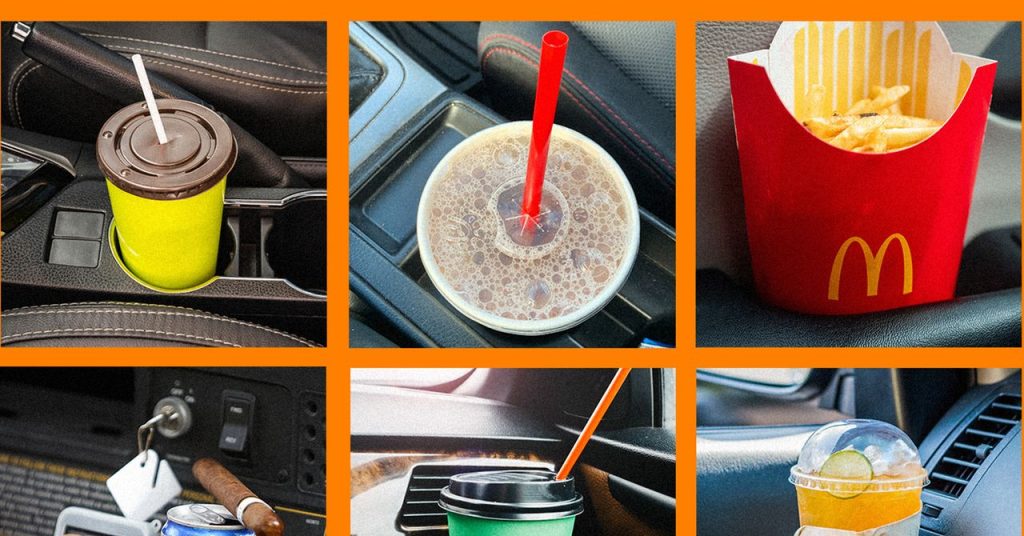Nearly 100,000 car buyers of 2025 model-year autos were asked what they thought of their gleaming new rides. The results are revealing, to say the least. Want to know who was the worst performer? That ignominy goes to Audi, with an embarrassing 269 problems reported per 100 vehicles.
However, one of the most interesting discoveries of the J.D. Power Initial Quality Study (labelled as a “key finding”, no less) concerned not annoyance with the lack of physical buttons, nor, amazingly, intrusive bongs from speed-warning systems, but a marked increase in “cup-holder frustration”.
“While it seemed like manufacturers had cup holders figured out … manufacturers are struggling to keep up with being able to accommodate all the different shapes and sizes [of containers] that are increasingly available,” says the report.
So it seems that despite the auto industry’s obsession with software-defined vehicles, many purchasers would forego any number of digital doohickeys, so long as there was enough room in their new cars for multiple Big Gulps. Paying through the nose for a fancy new car stuffed with tech—ADAS, ambient lighting, back-groping seats, dog modes—doesn’t stop auto buyers from complaining about insufficiently expandable beverage bays.
For several years, this long-running annual benchmarking report has advised car brands to pay closer attention to the cup-holder kvetching. The cylindrical voids of space—or, in some cars, flip-out trays, door spaces, fancy holsters, or hinged pockets—are still too small, gripe many of those surveyed. Too small for what, though? Most likely gargantuan Stanley cups, giant Yeti Gallon Ramblers and similar such bladder-busters, the spilt contents of which could drench a desert into bloom.
Even though center console real estate in today’s cars is at a premium—especially now that ever-bigger touchscreens have become seemingly essential in every self-respecting digital cockpit—America’s (and increasingly the Middle East and Australia‘s) big-drink culture dictates that automakers not scrimp on cup storage.
It’s the Little Things
Twenty years ago, a PricewaterhouseCoopers report suggested that the number of cup holders in a US vehicle was one of the most critical factors in clinching the purchase decision for potential auto buyers. That it remains just as vital today must rankle with auto software engineers, but it doesn’t surprise Chris Fischer, Nissan’s go-to engineer for cup holders. “That cup holders work well is important to customer satisfaction,” Fischer tells WIRED. “It’s a key decider when buying a car.”
Working from Nissan’s North American technical center in Farmington Hills, Michigan, Fischer is the company’s senior manager of vehicle performance development, and, along with a team of “cabin utility” engineers, he has toiled to improve in-car beverage storage since 2015, when poor cup holder performance adversely impacted Nissan’s J.D. Power benchmarking scores.
Cup-holder design matters intensely to many consumers, he says. “If they’re mad about a touchpoint every day, it’ll sour their desire to want this vehicle again.”
“Touchpoints are critically important,” agrees Dick Powell, cofounder of London-headquartered design and innovation company Seymourpowell. “Great design is fundamentally about making things better, and when you go into a car showroom, the touchpoints are the first interactions you have with the car. How does the [door] handle feel? What’s it like opening the door? Where are the cup holders?”




















